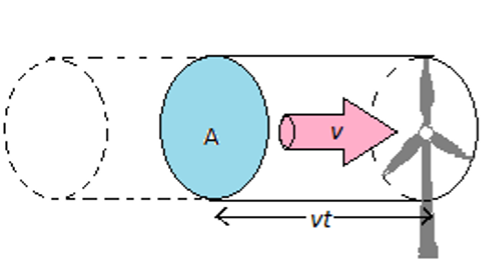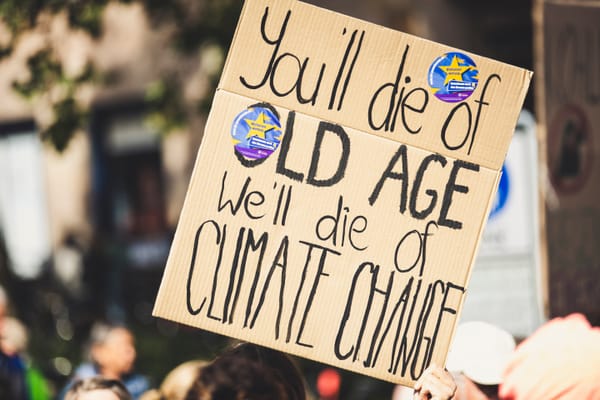Felix Science Explained: How much renewable energy can the UK produce?
Science contributor Naomi Dinmore answers a tough science question, and takes an in-depth look at how much renewable energy we can access in the UK.

In recent years, countries across the world have started gradually shifting to a more sustainable way of powering their homes, transport, services and industry. Using renewables - harnessing unlimited natural energy from the Earth - produces much less pollution than fossil fuels. As research and innovation in renewable technology has developed, costs have been greatly decreased. But how much renewable energy can we currently produce in the UK? How much renewable resource do we really have access to?
<iframe width="560" height="315" src="https://www.youtube-nocookie.com/embed/UpFyRwEI7Xc" frameborder="0" allow="accelerometer; autoplay; clipboard-write; encrypted-media; gyroscope; picture-in-picture" allowfullscreen></iframe>
According to a 2020 report from the Department for Business, Energy and Industrial Strategy, the UK consumed an amount of energy equivalent to burning 142 million tonnes oil (142 mtoe) in 2019, or 1.64PWh (petawatt hours) of energy.
Wind Energy
One of the most popular forms of renewable energy in the UK is wind farming, supplying 30% of electricity generated in the UK in the first quarter of 2020, and 53% of all renewables. The UK’s prime island location, temperate climate and varied topography mean wind is almost constantly blowing, so wind farms are always likely to be productive. This is especially true now, as there are an increasing number of windy storms hitting the UK every year due to climate change. But how much energy can we actually get from wind in the UK?
Firstly, we must calculate the energy that can be harnessed by one wind turbine. The total kinetic energy in a cylindrical packet of wind blowing through a turbine is given by:
Ek = 1⁄2 m v2,
where m is the mass of the wind. The mass is equivalent to the wind density ρ multiplied by the volume of the cylinder, which is given by the cross-sectional area A multiplied by the wind velocity v, multiplied by time. Therefore, the total energy of the wind packet is:
Ewind = 1⁄2 ρ A v t v2.



Power is equal to energy divided by time, so if we divide this equation by t, we will get the power of the wind turbine. However, wind turbines are not perfect; they are not able to convert all wind energy into useful electrical energy. The total power of the wind turbine is therefore given by the efficiency c of the wind turbine, multiplied by the energy per unit time of the wind packet:
Powerturbine = 1⁄2 ρ A v3 c .
So, for one turbine with a 25 m blade diameter, an efficiency of 50%, and a wind speed of 10 miles per hour, the power obtained is only 13kW per turbine. The Drax Power Station in North Yorkshire, a power station operating using energy from fossil fuels, generates approximately 3960 MW. So replacing this with wind power would require 300,000 turbines, or a land area taking up 2% of the country.
If we were to power the UK using only onshore wind, we would only be able to generate the required 142 mtoe (1.64 PWh) energy in a year if we converted the entirety of the UK into one giant onshore wind farm! Luckily, the UK also benefits from being surrounded by the sea.
Offshore wind farms allow for more space, and a larger blade diameter, meaning more wind passes through the blades. This also means the faster wind speeds found higher in the air are collected, and there are no obstructions like land or buildings, meaning turbines can generate more power. Because it is a relatively familiar form of renewable technology, offshore wind turbines are gradually getting less expensive and generating more energy. The UK is a world leader in offshore wind power. As of February 2020, there were 35 operational wind farms off the coast of the UK with a combined capacity of 8113MW.
Last November, Boris Johnson announced the new “10 Point Green Plan”, which has a huge focus on offshore wind. If the targets are achieved, offshore wind farms could supply 40GW of power by 2030, or 30 mtoe energy per year.
Solar Power
After wind power, solar power is the second largest form of renewable energy supplying the UK. In 2019, 12.9 TWh of energy was supplied by solar photovoltaic cells. It is now commonplace to fit new builds with panels and record numbers of households are installing their own.
Solar panels are usually made from a semiconducting material such as silicon. When sunlight is incident on the solar panels’ surfaces, electrons are knocked loose from their positions in the silicon atoms and begin to flow in a current, generating electricity.
Currently, if each south, east, and west facing house in the UK (15 million houses) was fitted with 12 solar panels (180 million solar panels), and each solar panel had an average power output of 265 W, this could generate up to 48 GW power.
However, equipping all non-north facing houses with solar panels right now is not very feasible. While domestic installations are continuing and solar farms are being built, current estimates say that the UK’s solar capacity could generate 27 GW power by 2030.
Solar panels can only work in the daytime, which is about 4400 hours yearly. This would mean that, with a power output of 27 GW, the UK could generate 0.118 PWh energy or 10 mtoe yearly. And that's assuming that it's sunny every day, which is just a little bit optimistic for the UK.



Hydro and Tidal Energy
Because we are surrounded by choppy sea and blessed with a wide tidal range, harnessing power from wave and tidal energy is ideal for the UK. However, there are unfortunately no tidal power stations currently in use, and there is no mention of them in the new “10 Point Plan”. Hydropower is a relatively small sector at the moment, generating 5.9 TWh of electricity in 2019 (roughly 5% of all renewables).
The tides are a certainty, and are predictable, meaning the power generated by a tidal power station would be reliable. As the water level rises and falls, it propels bi-directional turbines in the tidal power station which generate electricity.
The proposed (now rejected) Swansea Bay tidal lagoon would have generated 320 MW of power, supplying 155,000 homes. However, the project presented huge upfront costs (estimated at £1.3 billion), as well as concerns for local marine wildlife in the bay. To match the power generated by the Drax Power Station, ten tidal power stations with a similar power output to Swansea Bay would need to be built. Currently, it is simply not worth the huge initial costs.
The 2013 Government Tidal Energy Report quoted that the UK could theoretically produce 25-30GW of tidal power. 30 GW power could produce around 10 mtoe energy in a year.
Hydropower from waves operates in a similar way to tidal power, using the motion of waves to move pumps or turbines which generate electricity.
Wave farming is also relatively small-scale and new, but it is still something UK companies are aiming to develop. Aquamarine Power has planned to create a wave farm off the Scottish Coast that could have a capacity of 40 MW, supplying energy to 30,000 households. Like the tides, the motion of the waves can be guaranteed.
What Else?
Other forms of low carbon energy are nuclear power and bioenergy. While technically not renewables, they generate huge amounts of energy while not costing the planet. Last year, 34 TWh (3 mtoe) of renewable energy production in the UK was credited to "other bioenergy" - about the same amount as offshore wind. In the same year, nuclear power provided a huge 56.2 TWh (5 mtoe) of energy in the UK.
So What's the Solution?
It is clear that, to completely phase out fossil fuels, a combination of these renewable and alternative energies must replace our current fossil fuel power stations as soon as possible. It is looking more and more possible to produce enough energy to meet our yearly demands using only renewables, but there is still much more to be done. While many of these technologies require sacrifices of land space, research, and money, they are surely worth it in order to save our Earth.






